11. Slacker (Richard Linklater, 1991)
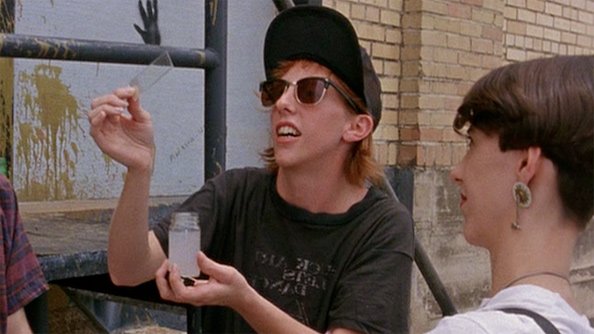
Slacker provided the inspiration and basic influence for this list’s previous title; both share a 24-hour span of their plot, characters eager to share de profundis knowledge of weirdly specific, often pop culture related, subjects and the ubiquitous atmosphere of the 1990’s.
Self-taught director Richard Linklater, who also appears in the film as the first character introduced, is clearly experimenting a lot on this one, making very few cuts. Due to its being essentially plotless, the viewer just follows a variety of characters as they cross each other’s paths with no specific pattern or logic, other than chance and some vague relativity of their discussions.
Spreading through the urban landscape of Austin, Texas, Slacker attempts to grasp a general feel of the contemporary youth culture rather than advance the plot or develop the characters. We only get a glimpse into their lives, similar to overhearing a stranger’s discussion in a shop or a cafe.
Considering its loose format and overall amateurish cast, it doesn’t seem hard to believe that cost was only about $23 thousand. Still, the film went on to meet a box office success of over $1.2 million, proving once and for all that the 90’s were a different time.
12. Eraserhead (David Lynch, 1977)
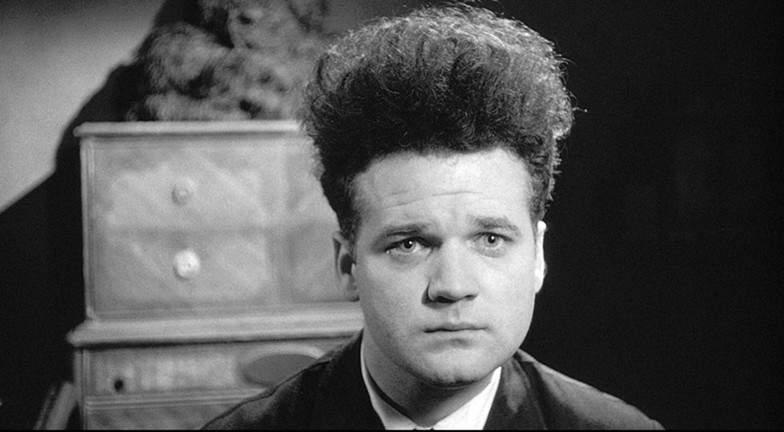
Whatever could be said about David Lynch’s work is too inconsequential; one has to watch it to understand what all the fuss is about, whether they love or hate it. In Eraserhead, the viewer gets not just a glimpse but a full-blown spectacle of his experimental, visionary prowess in creating unforgettable, dark and creepy imagery.
The story is merely an excuse of a vessel by which to project nightmarish visuals; Henry Spencer lives alone in his tiny flat, in a bleak and dreary urban landscape. He seems to be already having a hard time distinguishing fantasy from reality when he is forced to take care of his hideously deformed baby, as his girlfriend unceremoniously abandons them. His mental state deteriorates fast and it is impossible for anyone to tell facts apart from dreams or even put events in order.
Eraserhead is meticulously crafted (during a 5-year period, no less) to evoke a sense of dread. It already teems with Lynch’s personal style, in all its disturbing glory, despite being his feature debut. He still makes sure to feed the myth by refusing to discuss anything about the film’s meaning, leaving it up to the audience; his daughter Jennifer believes it reflects his fear of fatherhood at the time as well as her own health problems as an infant.
Securing funds for such a controversial film was no easy task, ultimately having to resort to donations from close friends and family of the cast and the director that amount to just $20 thousand. However, it raised enough curiosity to gather a significant $7 million, or 350 times its budget, in revenue and count the likes of Stanley Kubrick, Terrence Malick and Charles Bukowski among its fans.
13. Pink Flamingos (John Waters, 1972)
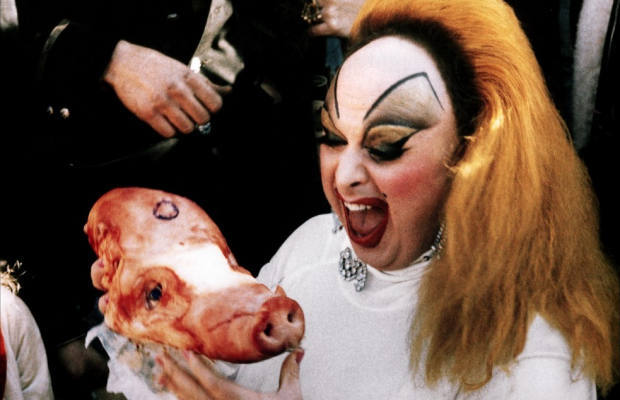
This unforgettable cult classic is one of the best representations of the term “midnight movie”, along with The Rocky Horror Picture Show and Eraserhead; the latter also shared a venue with some of John Waters’s films and was one of his favourites.
Starring the infamous drag queen Divine, a personal muse to Waters, the story revolves around her character’s, criminal element Babs Johnson, fight to regain her tabloid-given status as the filthiest person alive from a distusting, evil married couple of antagonists.
To say that plenty of zany antics ensue definitely would be putting it mildly; feces are sent as birthday gifts; dog feces are even (actually) consumed; chickens are used as sex toys. And camp style, or otherwise the overly theatrical, ironically corny cousin of kitsch, that takes art and beauty and turns them on their head, is taken to a whole new level.
Still considered an iconic piece of counter-cinema that eliminates any sample of good taste, Pink Flamingos can leave you gaping at how much further things could go. An amateurish cast delivers delightfully horrible acting, fabulously dramatic lines are spoken like no big deal and a cheerful, surf and rock ‘n’ roll soundtrack completes the fun.
Leave it to John Waters to make the most freaky and outrageous moviegoing experience possible on a next to nothing, estimated budget of $10 thousand. Actually by their own admission, the artistic crew was simply stealing what they needed after they run out of money. The movie proceeded to gross over $1,250,000 worldwide and permanently prove the Rita Mae West quote about bad being better right.
14. El Mariachi (Robert Rodriguez, 1992)
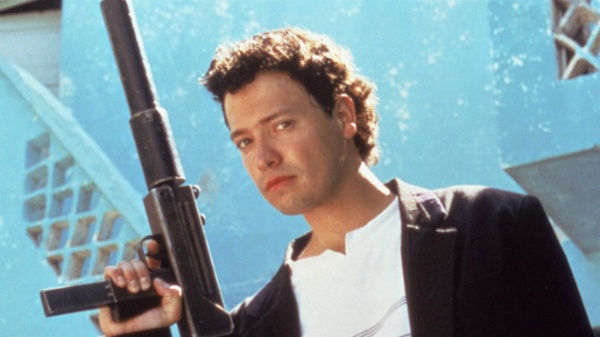
Another addition to the list filmed in the 90’s and for very little money, El Mariachi is the first feature film by notoriously cult director Robert Rodriguez. The similarities with Clerks or Slacker end there, however, as this is a proper, action-packed adventure on a $7 thousand budget; less than a third of its aforementioned counterparts.
Originally intended for straight-to-video release in Mexico, the movie became an instant favourite at the Sundance Film Festival and scored a distribution deal with Columbia Pictures almost overnight. This led to its earning $2 million at the box office.
Rodriguez took a rather unconventional route so as to secure funding for his project; he became a “lab rat”, meaning that he participated in a medical research about the effects of an experimental drug, meeting and recruiting El Mariachi villain “Moco” on the way. All his earnings were directly funneled into getting to a small, Mexican town and starting to shoot the tale of an unnamed guitar player, looking for love and fortune, but getting mistaken for an assassin by a crowd of vicious gangsters instead.
A lot of tricks were utilised in order to keep costs low; Rodriguez, the only one handling the camera, sat in a wheelchair and was rolled around to achieve smooth, dolly-like moving shots. Also, many scenes were shot in slow motion to expand duration, for fear that the material wouldn’t suffice for feature length.
Going even further, the director circulated the same actors in different disguises for multiple characters, but as even this small production was big news for the town, everyone was eager to participate anyway. The finished result is a highly enjoyable action flick and very fun to watch.
15. Paranormal Activity (Oren Peli, 2007)
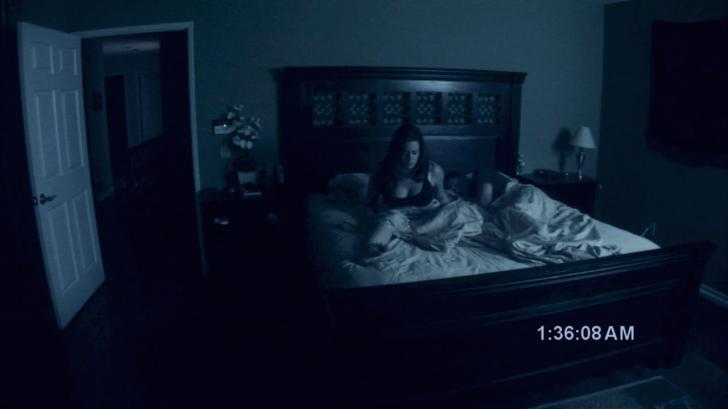
The movie that added a whole new dimension to the found footage horror sub-genre has a suitably astonishing origin; it was shot in just 10 days (in director Oren Peli’s own home, with a simple digital camera) for a mere $15 thousand dollars. It proceeded to become insanely successful at the box office, earning $193 million worldwide. Ten years and 4 sequels later, the original still holds the world record for most profitable film ever.
The story is a simple one, showing that the devil really is in the details sometimes; young, well-off couple Micah and Katie move into their new suburban house only to start experiencing alarming indications of a demonic presence there. Incidents that start small and unassuming keep getting more disturbing, until the final climax.
Understandably, special effects are minimal to nonexistent, done in-camera and then enhanced by Peli on his computer. The flick manages to become scary through the classic “fear of the unknown” approach; what you can’t see is always scarier than what you can.
The viewer lets their guard down by trivial, everyday dialogue scenes of the couple’s life only to be all the more spooked by the inexplicable movements, noises and attacks in the dark that follow. Even seasoned veteran Steven Spielberg found this movie too frightening to watch alone at night, ended up finishing it during daytime and loved it.
Author Bio: Dina Kelesi currently lives in Athens, Greece. She spends most of her time making or withholding snarky remarks and memorizing useless, interesting information.